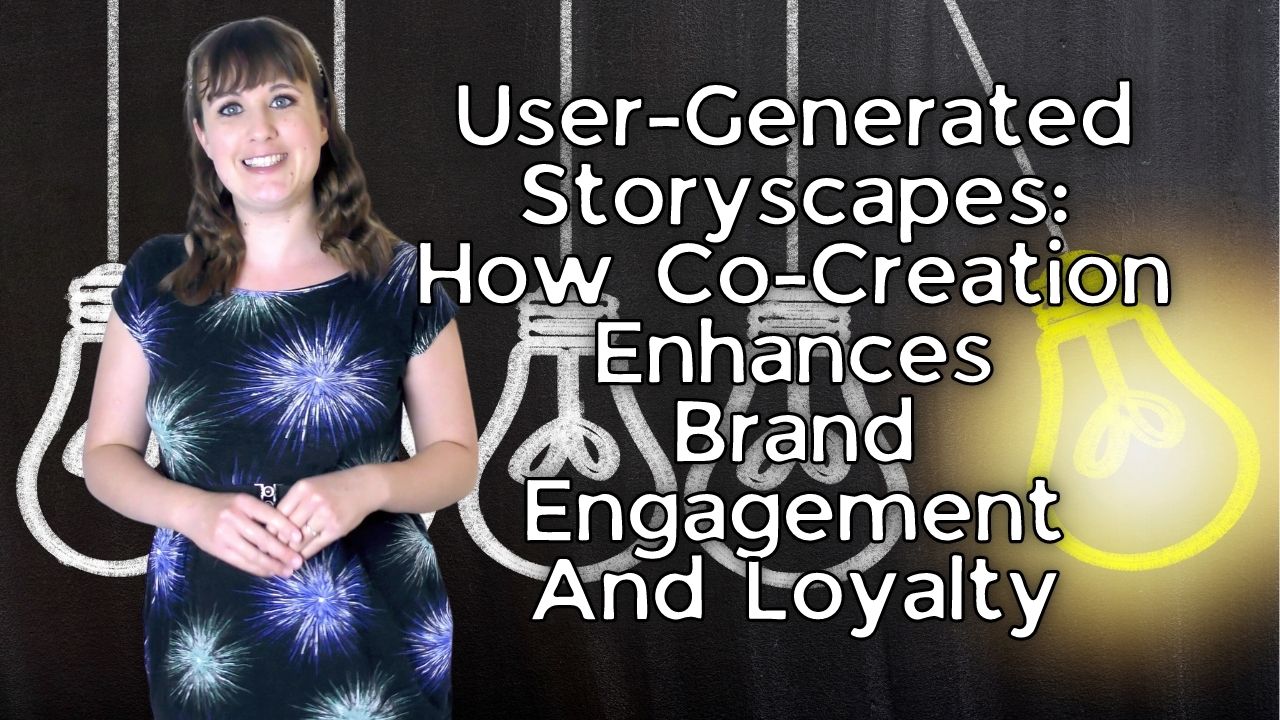
As an Amazon Associate I earn from qualifying purchases.
On the JJ Barnes Blog, I check out tips for how to use storyscapes to get the most out of digital marketing and content creation.
Brand engagement and consumer loyalty are valued commodities within digital marketing and content creation, and one innovative strategy which has attracted both marketers and consumers is user-generated storyscapes. This collaborative strategy empowers users to co-create brand narratives and deepens emotional ties, fostering greater brand engagement and loyalty.
This article embarks on an exploratory voyage into this fascinating realm examining narrative architecture, psychological impact analysis, naming coherence issues, and fragmentation art practices.
Narrative Architecture: Constructing Multidimensional Brand Worlds through Storyscaping
Storyscaping goes beyond conventional storytelling to create multidimensional brand worlds where consumers become integral figures – from various touch points spanning your narrative ecosystem. It creates an integrated story experience for consumers.
- Storyscapes Enable 360-Degree Engagement: Storyscapes present brands with an opportunity to connect with consumers across multiple levels – visual, auditory, emotional, and experiential. This holistic approach captures viewers’ interest while encouraging further discovery.
- Transmedia Integration: By seamlessly weaving multiple media channels such as social media posts, videos, podcasts, and interactive experiences into their narrative tapestry, brands can develop an intricate web of intertwined stories.
Psychological Impact of Storyscaping: Emotional Resonance and Brand Connection
Storyscapes use storytelling’s psychological powers to evoke emotions; when users emotionally connect with a brand’s narrative, their engagement becomes deeper and longer-lasting.
- Brand Identification: As users become immersed in the storyscape, they begin to identify with its values, mission, and characters; this creates an immediate feeling of belonging and lasting loyalty to that brand.
- Neurological Effects: According to research, compelling narratives activate consumers’ mirror neuron systems to simulate experiences depicted and further strengthen emotional connections to brands through increased simulation of them in their minds. This neurological response helps create emotional bonds with consumers for whom the experiences depicted feel familiar or emotionally relatable.
User-Generated Storyscapes: Fostering Co-creation and Brand Ownership Empower
User-generated storyscapes, facilitated by Squadhelp’s crowdsourcing solutions, allow consumers to actively collaborate in shaping a brand narrative through content production, feedback, or creativity – providing consumers with a sense of ownership over their storyscape experience and pride of ownership over it as they see their contribution woven throughout its narrative.
- Mnemonic Devices: Brands often include mnemonic devices in their storyscapes that serve to help recall brand imagery instantly – such as symbols, phrases, or visual elements that will trigger instant recall of their storyscapes – for their audiences to use and reinforce brand visibility through user-generated content creation. These become part of user-generated content production, further strengthening brand visibility.
- Social Validation: When users see how their ideas and contributions fit seamlessly into a brand’s storyscape, they experience a sense of validation that solidifies their commitment to it, resulting in increased engagement and loyalty to your brand.
Naming Coherence and Fragmentation: Comparative Examination of Multiple Brand Storyscapes
Many brands opt for cohesive narratives where content seamlessly links into an overall brand narrative, guaranteeing clarity and consistency of messaging across their brands. This approach ensures clear messaging is communicated.
- Fragmented Journeys: Other brands take an alternate route by encouraging users to contribute various and individualistic pieces. Such content demonstrates the brand’s multidimensional identity while speaking directly to a broad range of potential audiences.
- Balancing Act: When creating narrative coherence for audiences, fragmentation allows for adaptability and inclusivity. Finding an equilibrium depends on your brand identity as well as audience preferences.
Conclusion
With digital immersion and constant connectivity on the rise, user-generated storyscapes offer brands an effective brand engagement and loyalty strategy. By inviting consumers to co-shape brand narratives, brands foster co-ownership among target consumers as they shape the narratives that form brand identities; through narrative architecture, psychological impact, user-generated content creation, and strategic coherence, these brands can craft narratives that capture, inspire and develop lasting relationships within target markets.
Embracing the collaborative potential of user-generated storyscapes shows their dedication to meaningful engagement and long-term brand commitment from brand audiences alike.
Amazon and the Amazon logo are trademarks of Amazon.com, Inc, or its affiliates.







